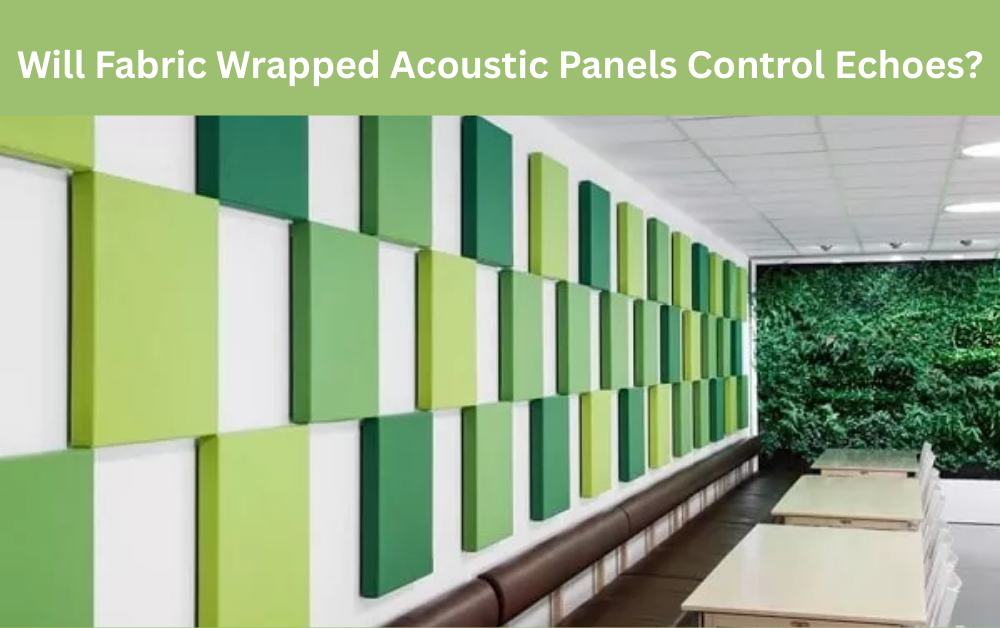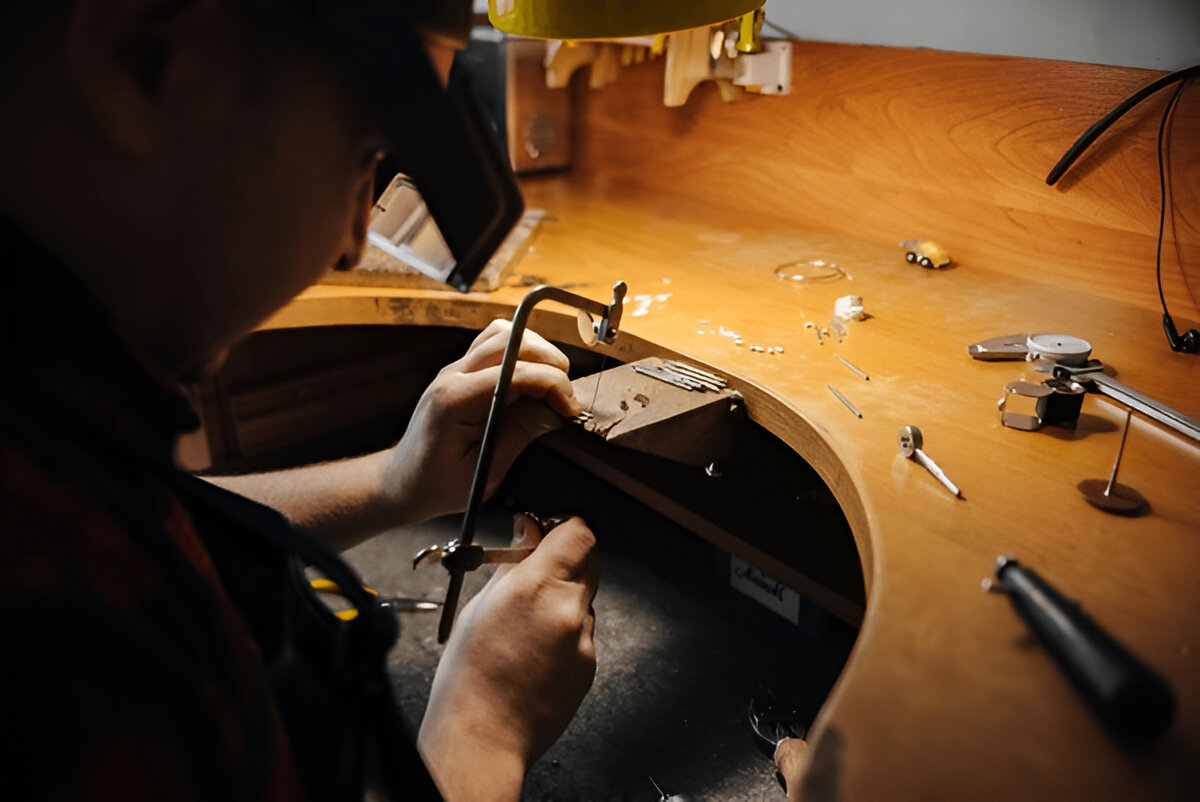Acoustics play a vital role in shaping the comfort, usability, and overall experience of any interior space. Whether it is a residential living room, a corporate office, a recording studio, or a public auditorium, the sound environment can significantly impact how people interact, concentrate, and communicate. Excessive echoes and reverberation are among the most common acoustic problems in enclosed spaces, and they can make even the most beautiful interiors uncomfortable. This is where fabric wrapped acoustic panels emerge as a practical and aesthetic solution.
In this article, we will explore whether fabric wrapped acoustic panels truly control echoes, how they function, their design flexibility, and the long-term advantages they provide.
Understanding Echoes in Interior Spaces
What Creates Echoes?
Echoes are produced when sound waves reflect off hard surfaces such as glass, concrete, wood, or tiles and bounce back into the room. If the surfaces are not treated with absorptive materials, sound reflections linger, creating reverberation. This results in unclear speech, distractions, and discomfort for occupants.
NOTE:- Spaces had been transformed with fabric wrapped acoustic wall panels that reduced unwanted noise while adding style. These panels had enhanced productivity and relaxation in diverse settings. Perfect Acoustics had specialized in high-quality acoustic solutions. Contact Perfect Acoustics now to explore tailored services that ensure improved sound control.
Why Echo Control Is Important
Controlling echoes is not only a matter of comfort but also of efficiency and well-being. In offices, excessive reverberation reduces productivity and focus. In restaurants or hotels, it disturbs the dining experience. In schools and universities, it impairs communication and learning. Effective echo management ensures that spaces are functional, enjoyable, and health-conscious.
How Fabric Wrapped Acoustic Panels Work
Composition of Fabric Wrapped Panels
Fabric wrapped acoustic panels are built using a combination of absorptive cores, such as fiberglass or mineral wool, encased in an acoustically transparent fabric. The core material absorbs sound waves, while the fabric cover adds a decorative finish that integrates seamlessly with the interior design.
The Science Behind Sound Absorption
When sound waves hit these panels, the porous core material converts the sound energy into heat energy through friction within the fibers. This process prevents the sound waves from bouncing back into the room, thereby minimizing echoes and reducing reverberation times.
Placement and Effectiveness
The effectiveness of fabric wrapped acoustic panels depends on proper placement. Installing them on walls and ceilings in strategic locations ensures maximum sound absorption. Larger or open spaces with higher ceilings often require more panels to achieve optimal acoustic balance.
Benefits of Fabric Wrapped Acoustic Panels

Echo and Noise Reduction
The most immediate benefit is the reduction of echoes and reverberation. By absorbing mid to high-frequency sounds, these panels create clarity in speech and music, making communication more effective in classrooms, offices, and conference halls.
Aesthetic Flexibility
Fabric wrapped panels come in a wide variety of colors, textures, and patterns, making them as much a design feature as an acoustic solution. Designers can match them to the interior theme or use them as statement décor elements.
Improved Acoustic Comfort
By eliminating background noise and excessive echoes, these panels foster a more peaceful environment. Employees in offices can focus better, while visitors in public spaces enjoy a more relaxed atmosphere.
Versatility Across Applications
They are suitable for almost any type of space. From home theaters and recording studios to hotels, gyms, and healthcare facilities, fabric wrapped panels deliver a versatile solution to diverse echo problems.
Applications of Fabric Wrapped Acoustic Panels
Corporate Environments
Open-plan offices and boardrooms often suffer from sound reflections that disrupt communication. Fabric wrapped panels create a balanced soundscape where meetings and conversations can flow without disturbance.
Educational Institutions
Lecture halls, classrooms, and libraries rely heavily on clear communication. With echoes minimized, students hear instructions clearly, ensuring better learning outcomes.
Hospitality and Entertainment
In restaurants, bars, and cinemas, controlling echoes enhances guest experience. Customers can converse without raising their voices, and sound systems deliver more defined audio.
Residential Settings
Homeowners are increasingly turning to acoustic panels for home theaters, music rooms, or even living rooms, where comfort and functionality are both essential.
Design Considerations for Fabric Wrapped Acoustic Panels
Customization in Fabrics and Sizes
These panels can be customized to fit various shapes, sizes, and designs. The fabric options range from solid colors to printed patterns, allowing them to blend with or enhance the interiors.
Integration with Modern Interiors
Modern design trends emphasize seamless integration. Fabric wrapped panels can be designed as wall art, partitions, or even ceiling clouds, ensuring they complement the overall look while performing their acoustic role.
Durability and Maintenance
High-quality fabric wrapped acoustic panels are durable and resistant to wear. Their maintenance is minimal, often limited to occasional dusting or vacuuming. Some fabrics are also stain-resistant, making them suitable for high-traffic areas.
Long-Term Value of Acoustic Solutions
Enhancing Productivity and Well-being
Spaces treated with fabric wrapped panels promote better focus, reduce stress, and contribute to well-being. Employees in offices are less distracted, and visitors in public spaces feel more comfortable.
Return on Investment
While they require an upfront investment, fabric wrapped acoustic panels deliver long-term benefits. They improve usability of spaces, enhance customer satisfaction in businesses, and contribute to property value.
Sustainability Factors
Many fabric wrapped panels are manufactured with eco-friendly materials. Acoustic cores are often recyclable, and fabrics can be sourced sustainably, making them a responsible choice for environmentally conscious projects.
Comparing Fabric Wrapped Panels to Other Acoustic Solutions
Acoustic Plaster
While acoustic plaster provides seamless finishes, it lacks the same degree of customization in design compared to fabric wrapped panels. Panels offer more flexibility in both installation and relocation.
Wooden Acoustic Elements
Wooden panels can enhance aesthetics but may not absorb sound as effectively as fabric wrapped panels. A combination of both is often used for a balanced acoustic design.
Foam Panels
Foam panels are inexpensive but often fall short in terms of durability and visual appeal. Fabric wrapped panels offer a higher-quality solution with long-lasting benefits.
Future of Acoustic Design with Fabric Wrapped Panels
Innovations in Materials
New technologies are enhancing the sound absorption efficiency of core materials while expanding fabric options. This means future panels may deliver even better performance and style.
Growth in Demand
With rising awareness of the importance of acoustics in architecture, demand for fabric wrapped acoustic panels is expected to grow. More industries are recognizing their dual benefits of performance and design.
Hybrid Applications
Combining panels with other acoustic treatments, such as baffles or ceiling rafts, creates advanced solutions for large and complex spaces. This integration ensures comprehensive echo control.
Conclusion
Fabric wrapped acoustic panels are more than just decorative wall coverings. They are scientifically designed to absorb sound waves, reduce echoes, and create acoustically balanced spaces. Whether in corporate offices, educational institutions, residential interiors, or hospitality environments, these panels deliver both style and function.
The evidence strongly supports that fabric wrapped acoustic panels not only control echoes but also enhance the overall experience of spaces. Their blend of performance, durability, and design flexibility makes them a smart choice for anyone looking to transform their environment into a space where sound is clear, communication is effective, and comfort is guaranteed.
For More Isightful Articles Related To This Topic, Feel Free To Visit: writoka



